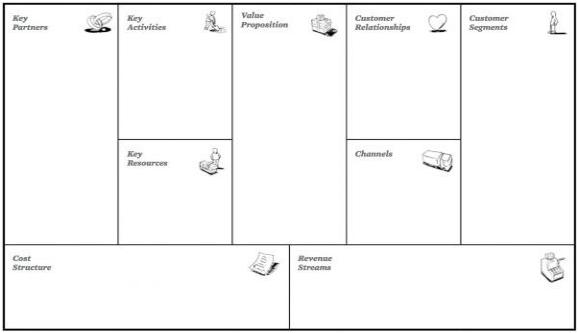The Difference Between a Business Plan and a Business Model
Over the years, there has been a lot of commentary about the differences between business plans and business models; which one is better; how business models have killed the need for a business plan; that a business plan is too time consuming and that people are wasting their time writing a business plan rather than getting on with the business of doing business. To be honest this kind of thinking is too simplistic and frankly it is unhelpful for business.
Are both valuable? Absolutely. Are both needed? Absolutely. In fact, they are inextricably linked together and they were never meant to be thought of as two distinct business planning tools. In fact, business models and plans should be developed as part of the same business planning process. This is eloquently argued by Alexander Osterwalder, co-author of Business Model Generation who states that there is a “close relationship between business model and business plan. A business plan’s main role is to plan, outline and communicate a business (or not-for-profit) project and its implementation internally or externally…. In fact, when you have designed and thought through your business model you have the perfect basis for writing a good business plan.” In essence, a business plan is a more comprehensive version of a business model (see here).
A business plan describes the entire company, its strategy and why it is going to be successful. Whether elaborate or simple, a business plan is an assembly of facts, ideas, assumptions and projections about the future. It explains who you are, what your ideas are and how that all comes together in to a coherent strategy. Preparing a business plan is often left on the long-finger and even avoided because of the perception that it can be time-consuming and difficult to write. This is a miss-conception which often leads to business failure because of no or poor business planning. Part of doing business is continuous business planning and a business plan really works when you turn it into a live plan – that is business planning. A business plan is like a parked car; business planning is like taking that car on a trip.
While preparing a business plan is not an entirely painless activity and does take time and effort, oftentimes people make it more complicated than it actually needs to be. You can use the following guide for developing your business plan and is usually divided into detailed sections such as:
- Executive summary
- Company Description
- The Business (includes business mode)
- Products & Services
- Market Analysis
- Marketing & Sales Strategy
- Research & Development
- Financial Projections
- Funding Requirements
- Appendices
The business model is part of the business plan and it details how your organization creates, delivers, and captures value (economic, social). It is a very useful representation of a company’s logic in terms of what value proposition it offers its customers, how that value is delivered to their customer segments, what activities, resources and key partners need to be utilised to deliver that value and the company generates revenue. The figure below presents Osterwalder’ s Business Model Canvas which has become synonymous with the business model and consist of nine building blocks:

- Key Partners
- Key Activities
- Key Resources
- Value Proposition
- Customer Relationships
- Channels
- Customer Segments
- Cost Structure
- Revenue Streams
A key result of mapping your business model is that management teams will have a compass that allows them to know what kinds of ideas, products/services need to be developed and what types of marketing and revenue generation opportunities are viable. The process of examining assumptions regarding market forces, industry forces, key trends and macroeconomic forces, will by its nature, allow users to get to grip with the complexities which need to be considered in choosing a business model suitable for their environment. It challenges users to consider future scenarios; it is not about copying or bench marking, but about creating new mechanisms to create value and derive revenues.
Finally, over the last number of years, there has been significant innovation in business model thinking and documenting of different business models that can be applied to your business. While it is critically important that you understand your business model, it is just as important to do your business plan. The business model is only part of the business planning journey and you the need the business plan to see how you are going to get there.

